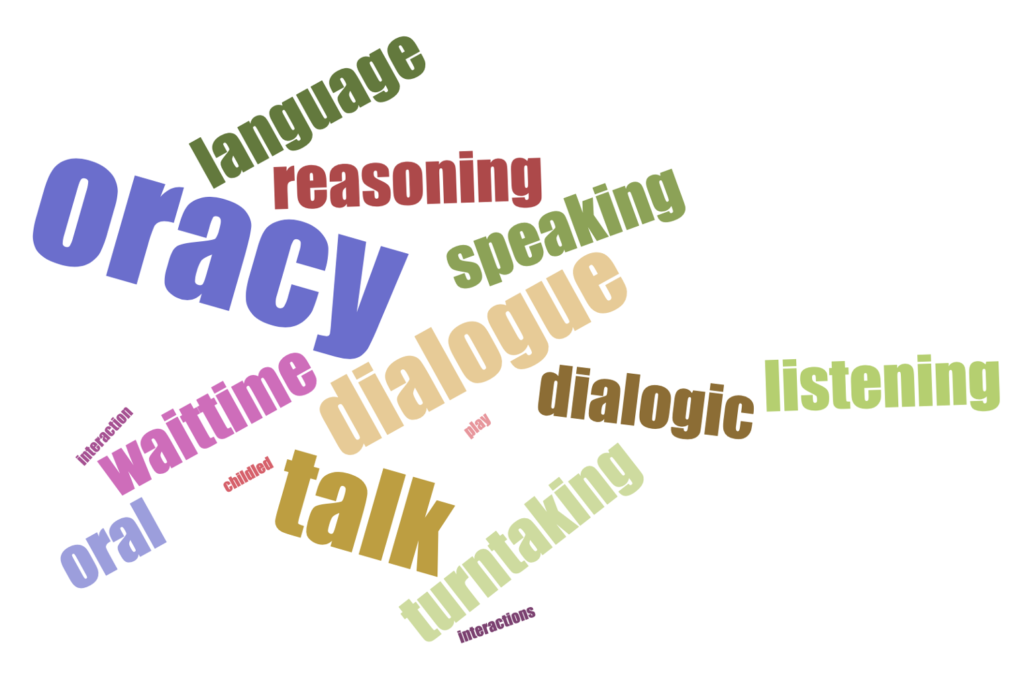It is time to talk… about the importance of academic talk.
Since the beginning of the year, I have worked with lots of school leaders, with discussions quickly turning to the impact and experience of the pandemic, then onto reflections about future plans.
A regular refrain is the limiting experience of lockdown on academic talk. Despite the brilliant efforts to communicate and teach remotely, I hear the repeated examples from teachers frustrated by talking in the black void and of missing the countless opportunities for conversations, clarifications, and careful interactions in the classroom.
Of course, there is a time for authoritative teacher talk, there is a time for ‘golden silence’, and there is a time, and a need, for purposeful and well-structured academic talk.
What are the micro-moves of effective academic talk?

Though we can all recognise the value of academic talk as part of the fabric of teaching and learning, too often we can miscommunicate and misunderstand one another when it comes to talk. It can trigger assumptions and arguments with ease.
The varied terms we routinely use in education may not help the cause. Academic talk, speaking and listening, dialogic talk, oracy, turn-taking, and more… It is too easy to speak at crossed purposes and not develop a shared language or to properly codify the specific moves of effective academic talk.
Not only that, notions of academic talk or oracy can be misinterpreted as just the acts of making speeches or taking part in debates. We miss the opportunity to distil the precise micro-moves of academic talk that can be undertaken every day in every classroom. Experienced teachers can undertake these moves regularly, and seemingly naturally, but it pays off to make those moves explicit and to develop a shared language and understanding.
So, what are those micro moves that skilled teachers enact so effortlessly?
Revoicing. This micro move describes when the teacher repeats back a pupil response, verifying and often clarifying their insight. For instance, ‘So, you’re saying…’; ‘I think you are arguing…., is that right? Revoicing has the benefit of simple repetition. Pupils get the opportunity to hear an idea once more, distilled and made clear, offering the chance for greater understanding. It also offers a great opportunity to scaffold pupils’ language to use apt academic vocabulary. Read an excellent research article on revoicing HERE.
Restating peer reasoning. You can harness the power of repetition, and encourage pupils to listen more actively to one another, by habitually encouraging that pupils restate one another’s reasoning. For instance, ‘So, Jane thinks there are multiple causes that triggers the war… Adil, can you put Jane’s argument into your own words?’ A further move, to develop a rich dialogue is to clarify once more with Jane – thereby repeating, refining and extending the academic talk.
Expanding and recasting. A crucial teacher talk move is to expand upon a pupil response and carefully recast their utterance with apt academic vocabulary where necessary. For example, “Pupil: ‘He stretches the people like in his other paintings.’ Teacher: ‘Yes – the elongated bodies are a really crucial feature El Greco’s artistic style.’” We can be explicit about this sophisticated academic code switching, encouraging pupils to do it (sensitively) with one another too.
‘Simple <> Sophisticated’. You can model and scaffold the selection of apt academic vocabulary in every utterance in the classroom. With the modelling strategy, ‘Simple >< Sophisticated’, teachers can quickly and repeatedly model apt word choices. For instance, if a pupil uses the word ‘sweat’, then the teacher may model the use of ‘perspire’. We can use such pairings repeatedly and discuss the choice and whether it does the job. Should pupil’s use ‘chop off’ in history, should we substitute it with ‘decapitate’? Sometimes simple will be best, but the sophisticated word choice is often necessary.
Wait time. Captured in the seminal 1972 research by Mary Budd Rowe, ‘wait time’ is that subtle but often overlooked habit of ensuring pupils have more time to think before they are expected to engage in academic talk. The impact from giving pupils nine-tenths of a second as compared to three to five seconds was marked decades ago, and we can assume it is no different this side of the pandemic. Longer wait time can encourage more extended pupil responses (assuming pupils have enough background knowledge to draw upon).
We can easily assume that these subtle talk moves are all part of our repertoire. But so much research on classroom talk shows that developed academic talk is too often truncated – often unintentionally and tacitly. The delicate development of these micro-moves may be trickier and more subtle than is typically conceived, so we should pay them close attention.
It may well be the right time to talk with colleagues about the restating and refining the routines of academic talk.
Related reading:
- The brilliant Mary Myatt makes a compelling case for ‘Walking the Talk’ – HERE.
- Professor Lauren Resnick and colleagues have summarised what they term as ‘Accountable talk’ which is a useful overview for all facets of effective academic talk – HERE.
- Tom Sherrington explains in a 5 minutes of utter clarity from his kitchen (‘Kitchen Pedagogy’) his questioning routines: https://youtu.be/LAqde38TwE0.






Comments